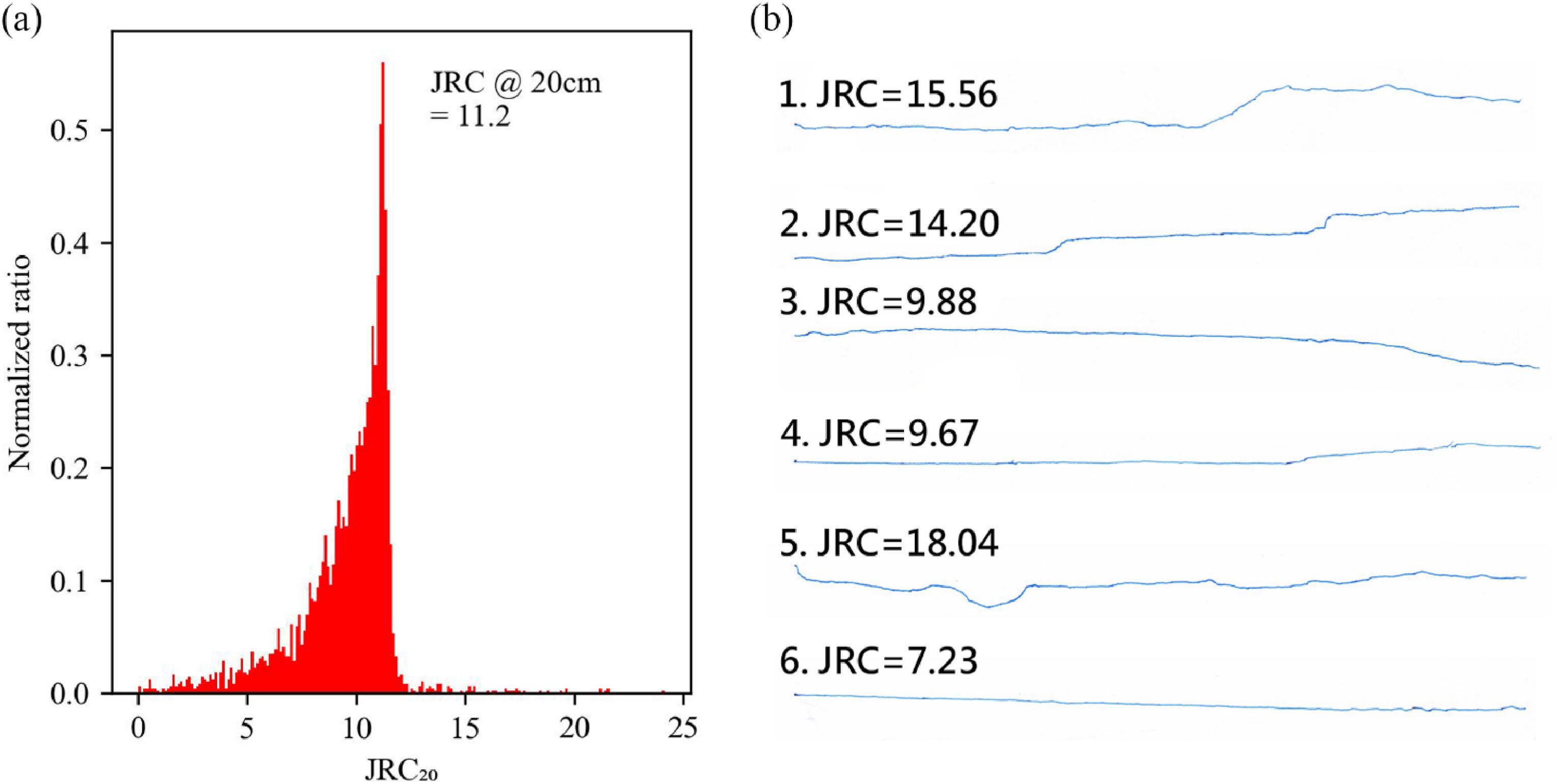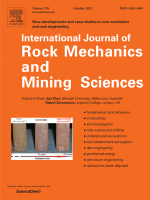Development of a computer program from photogrammetry for assisting Q-system rating
This study aims to develop a computer program to analyze the point cloud obtained via UAV photogrammetry in a bid to reduce the in-situ survey time of the Q-system rating.

Fig. 23. (a) Analyzed JRC20; (b) JRC20 of field measurement profile calculated based on Tse and Cruden.
Technology Overview
A computer program to assist the Q-system rating of jointed rock mass is herein developed based on the photogrammetric analysis of point clouds. Three major rating terms, namely, rock quality designation (RQD), joint set number (Jn), and joint roughness number (Jr), are evaluated using predefined algorithms in the computer program without the input of an engineering expert.
Applications & Benefits
This study proposes a computer program that uses point clouds to assist the Q-system rating. We use the RANSAC SD algorithm to extract the major rock joints of the outcrop then calculate the corresponding wJd based on those of major joints to obtain Jv. Finally, we compare the evaluated Q-system rating points with manual Q-system rating and field measurement, the results show that the proposed program can be utilized in other sites. However, with the popularity of UAVs and LiDAR, point-cloud-assisted analysis will become a useful and ubiquitous tool for site investigation and significantly improve the efficiency and safety of fieldwork.
Abstract:
A computer program to assist the Q-system rating of jointed rock mass is herein developed based on the photogrammetric analysis of point clouds. Three major rating terms, namely, rock quality designation (RQD), joint set number (Jn), and joint roughness number (Jr), are evaluated using predefined algorithms in the computer program without the input of an engineering expert. The random sample consensus algorithm is adopted to identify major outcrop joint surfaces. Thereafter, the major joint surface is determined to calculate the weighted joint density (wJd) and its corresponding RQD. In addition, a spherical K-means clustering is utilized to obtain the number of dominant joint sets and further convert it to the Jn value. Moreover, the a/L method is adopted to calculate the joint roughness coefficient (JRC) of those facets and convert it to Jr. The analysis results agree with manual Q-system rating results, revealing that the proposed computer program is practicable. Furthermore, we evaluate the limitation of the proposed computer program as applied to interlayered sedimentary rocks. Finally, we found that doubling the standard deviation of the distance between fitted facets to the point cloud is a reasonable estimate of the JRC20 and Jr of rock joints.

Development of a computer program from photogrammetry for assisting Q-system rating
Author:Chiu Chia-Chi, Liu Chun-Yuan
Year:2023
Source publication:International Journal of Rock Mechanics and Mining Sciences Volume 170, October 2023
Subfield Highest percentage:99% Geotechnical Engineering and Engineering Geology # 2 / 229
https://www.sciencedirect.com/science/article/pii/S1365160923001739